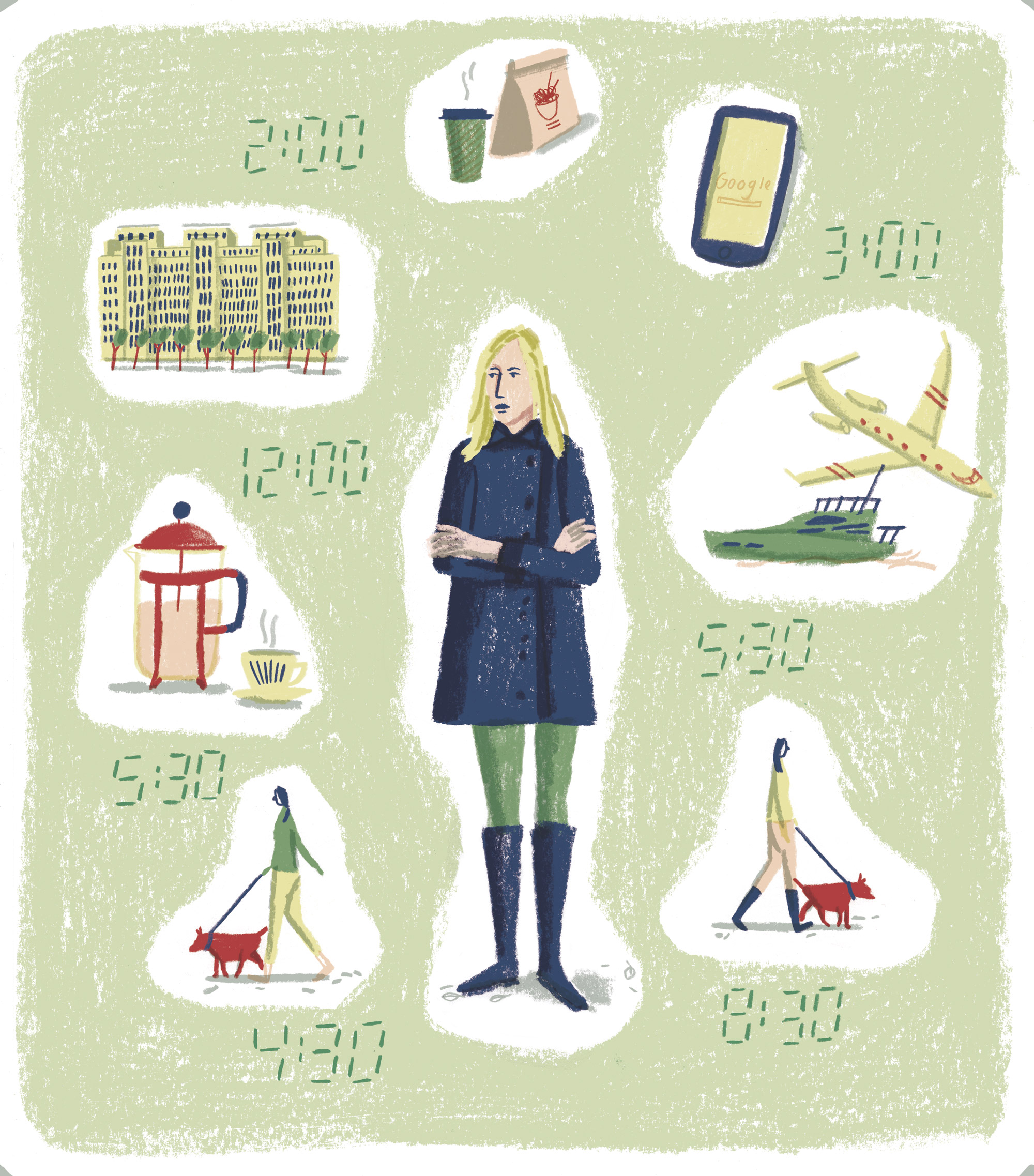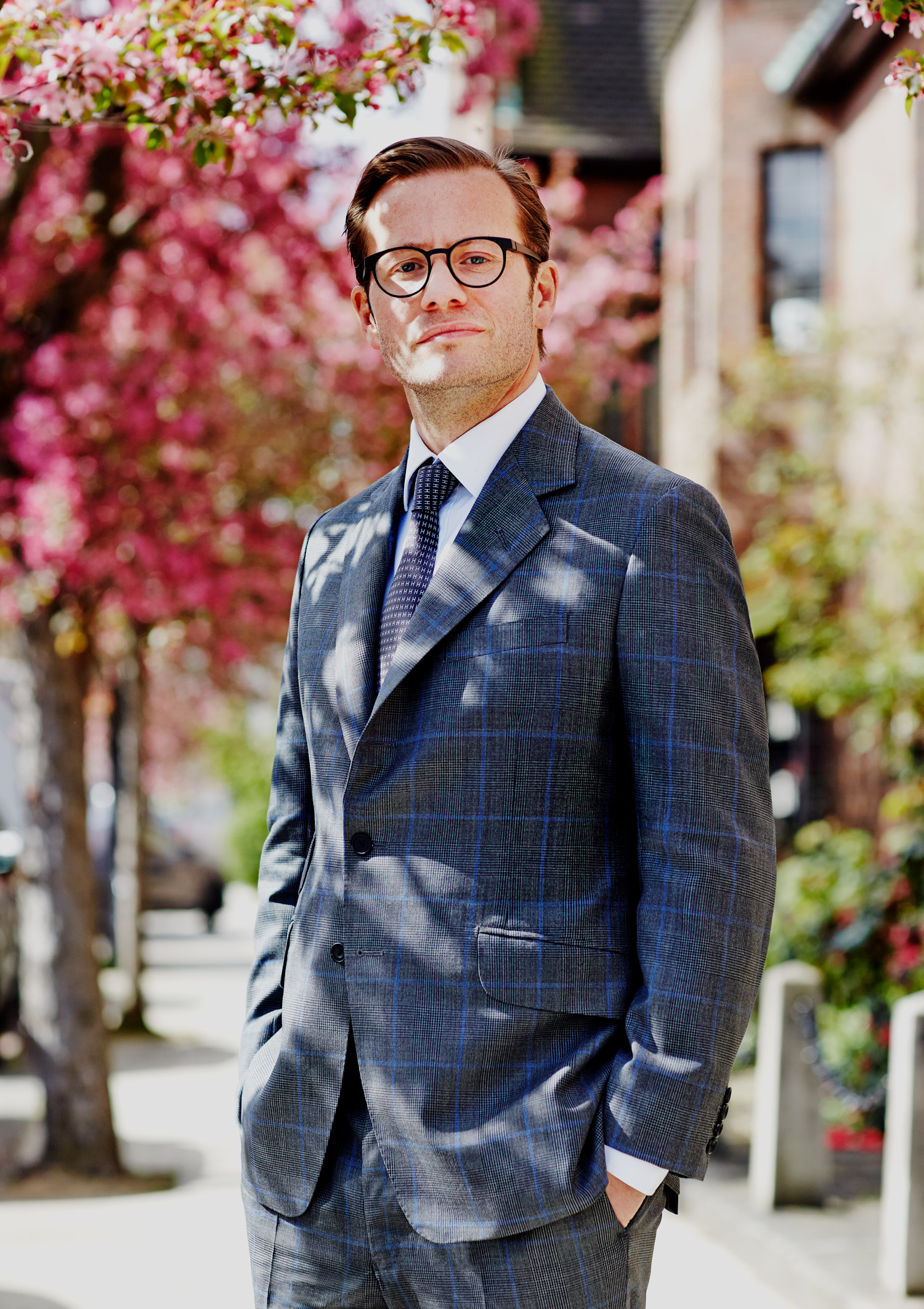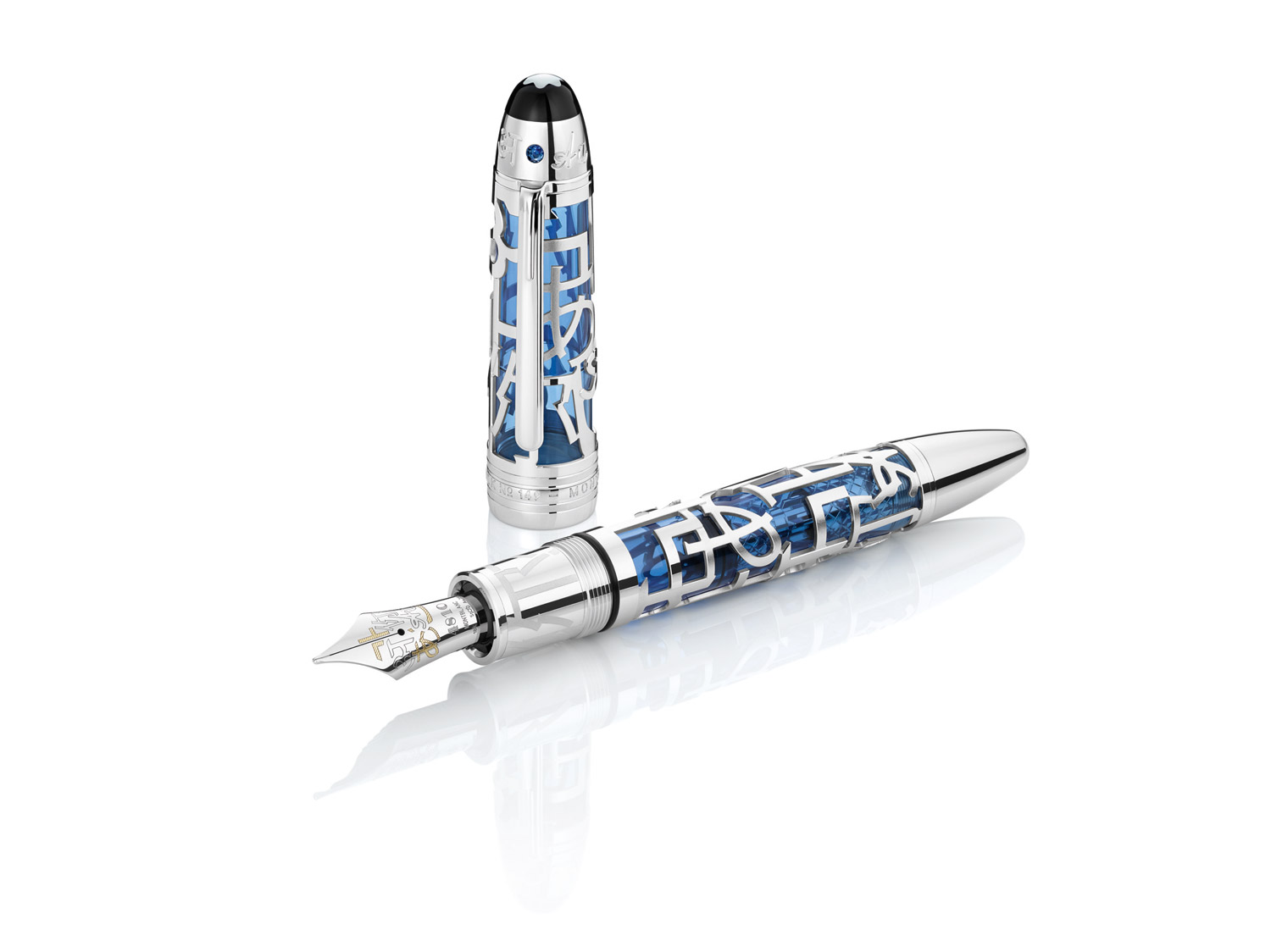No wonder, given the demands placed on him by a young family and a thriving international tailoring business. Making an exception, given the topic of conversation, Tom enjoys a pint, recalls the culture he encountered when he started on Savile Row in the late 80s, and explains why the pub still has a crucial part to play in the world of 21st-century tailoring.
But let’s start at the beginning, with a 19-year-old Tom Mahon visiting London as a representative of his then firm, Redmayne of Wigton, Cumbria. “Redmayne’s was invited to the Royal Warrant holders’ dinner, which that year was in the Houses of Parliament,” remembers Tom. “I came down [to London] on the first train and I went into a few tailors’ shops, including what was then Kilgour, French & Stanbury. One of the guys there said, ‘Let’s go for a pint.’ And he took me to the Mason’s Arms.” Tom learned something about the divisions that exist on Savile Row when he asked why they were going to the Mason’s Arms when there was another pub on the other side of the road? His host replied sharply, “Don’t go in there. That’s where tailors drink.” At this point, you need to know that among the trade “tailor” (AKA coat-maker) is the name given to someone who actually stitches the constituent parts of a suit together; while “cutters”, like Tom, measure clients, create the unique paper patterns upon which bespoke suits are based, mark the cloth with chalk and cut out the pieces.
However, Tom did not respect this sectarianism, and a tailor’s pub, The Burlington Arms (where these photographs were taken), became his favourite, because he joined a close coat-making friend when he drank with his colleagues. How was this shocking break with Savile Row convention received? Tom smiles as he recalls, “The tailors would all look at each other, as if to say, ‘What’s this cutter up to? I was a bit of an oddity, but do you know what they put it down to? I was from the north of England, so of course I was really weird.”
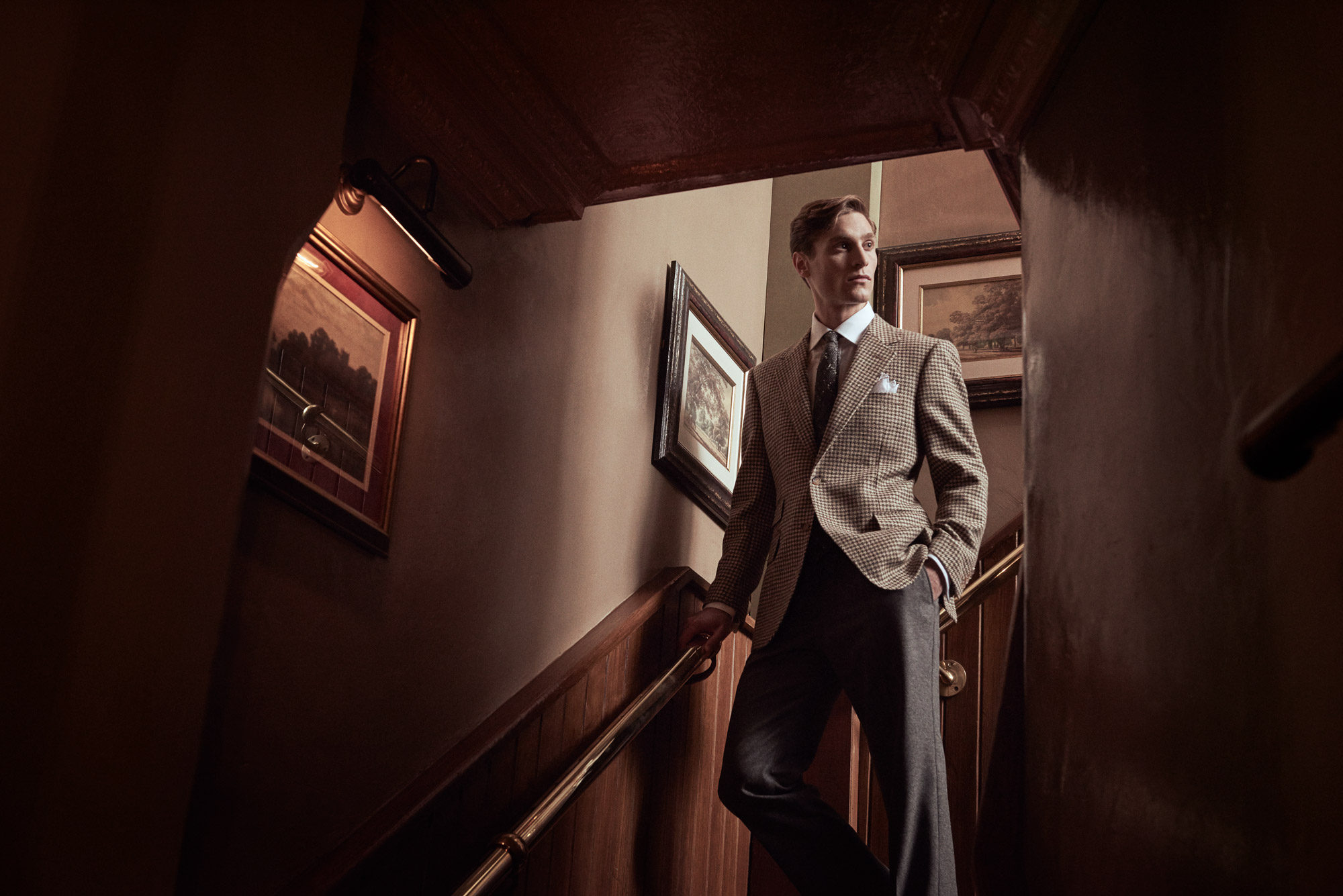
According to Tom, daytime drinking was rare among Savile Row tailors, especially for anyone meeting clients during the day. But by 5pm, it seems the younger members of the trade had built up quite a thirst. “On Monday, you had to go for a drink because it would be rude not to inquire about what sort of weekend your mates had had,” explains Tom. “So you went drinking on an empty stomach at five past five. Beer tastes really good then, so you drank too much. Next day we went into work and said, ‘Bit of a session last night.’ We’d limp on through the day, but in the afternoon we’d start to come round and then some bright spark says, ‘Let’s just have two pints and let the rush hour crowd get away.’ So you’d get lead down that dark path again.” And was this nightly indulgence compulsory? Almost, according to Tom: “I had a friend, who if I said that I’d been drinking all week and didn’t want to go out again, used to say, ‘Don’t be so immature.’ Of all the things to say, that’s really quite cutting!”
“I had a friend, who if I said that I’d been drinking all week and didn’t want to go out again, used to say, ‘Don’t be so immature’”
The tailoring scene is no longer like this, as Tom acknowledges: “When I came in to the trade, people were watching The Sweeney [a television show about rough, hard-drinking cops] and reading books about hacks on Fleet Street, it was a world of fags and booze. It was expected.” And now? “My apprentices don’t even drink tea!” he exclaims. Worse yet, “They drink glasses of water! PG Tips [a popular brand of breakfast tea] is too powerful for them! They don’t batter themselves like we did. It was a test of your manhood that you could drink beer all night and be at work the next morning and do a good job all day.”


However, there was more to the pub than merely the consumption of alcohol, because workers from the different tailoring houses would meet and talk and plan career moves, and the coat-makers in particular took the opportunity to dress up. Tom explains how this represented a change from their work outfits, “The tailors used to work in their ‘sitting drums’, looking like down-and-outs with the backside out of their trousers, holes in the knees and patches on their elbows. But when they went out on a Friday, they were immaculate, wearing cashmere overcoats. They tended to be older, so with their cigars going they had that mafioso look.” Pubs also played a pivotal role in the romantic life of “The Row”; “We had all these lovely female apprentices,” says Tom. “I’d ask to meet them in The Burlington Arms. But if you wanted to impress a girl, you told her you did your drinking in Mulligans, which was an oyster house on Cork Street.”
Another aspect of Savile Row life was “private”, the name used by tailors for work done for clients outside the auspices of their employer. These transactions were arranged and exchanged in pubs. It’s a practice that Tom recently had reason to revisit. “Last year, I had a foreign client who asked to meet me to order some more suits. He knew roughly what he wanted, but I couldn’t be in London to meet him. So I rang The Burlington Arms and explained that my client was going to call in for a pint that evening, and I wanted them to show him some fabric. The cloth merchant delivered the patterns to the pub, and my client went in that evening, had a pint and picked a couple of patterns for his suits.”
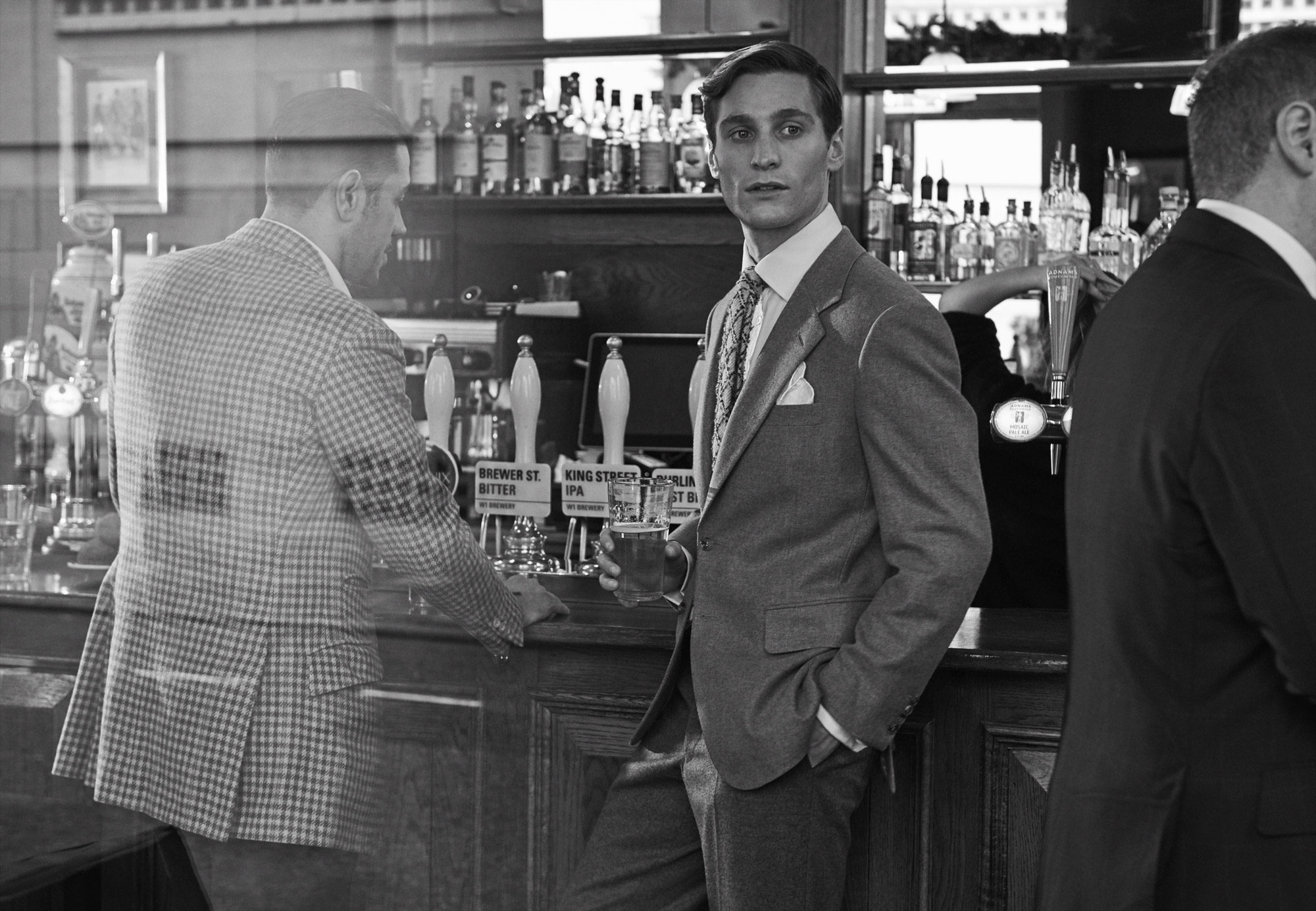
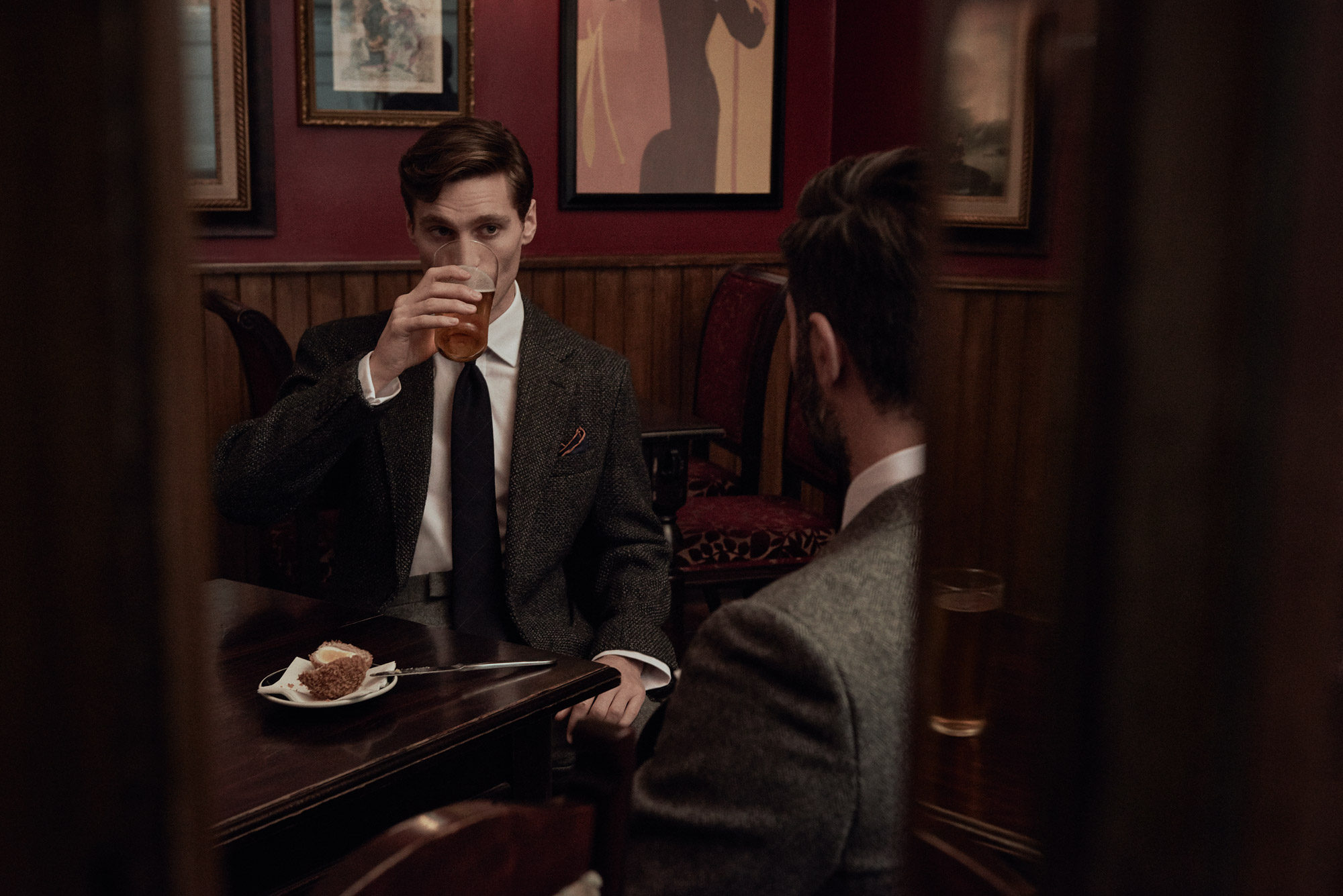
Photo Assistant JAMES REES, Digital Assistant MATT FOXLEY, Producer THANH MA, Grooming MICHAEL O’GORMAN,
Models ANDREW and DUNCAN at Models 1. All Clothing ENGLISH CUT
The Burlington may be thriving, but in other ways Savile Row has changed. Mulligans has gone (Tom’s now married, so he no longer needs to pretend that he eats oysters). Vigo’s, the pub where Tom bade farewell to his old boss, legendary Anderson & Sheppard head cutter Dennis Halberry, is now a shop. And Tom himself, while retaining his affection for The Burlington Arms, has migrated to new watering holes. Just across Chiltern Street from the English Cut shop is The Barley Mow, a London pub with a listed exterior and listed private drinking booths inside. Come the summer, however, and Tom will be on Marylebone High Street: “There’s a lovely place called Fischer’s, which is wonderful for cold beer and sausages.”
When, over a decade ago, Tom’s English Cut blog revealed to his readers and customers what really goes on in the tailoring business, he presaged a relaxation of the old formal codes of behaviour that governed the tailor-client relationship. Tom recalls that as a young cutter, “Going for a drink with a client was definitely not on the agenda, until I started my own business and became my own man.” Things are now very different. “There’s a guy who wrote to me a year ago saying that he was finally in a position to order a couple of suits, but only on the condition that I take him for a pint in The Burlington Arms after his fitting. I think it’s nice to go for a drink with the clients, but it’s funny that the Americans always think that you mean literally one pint.”
In different ways, pubs have been important throughout Tom’s career. The fact that his clients are as keen to have a drink with him as they are to have one of his suits says a lot about him personally, but also about the particular bond that exists between a man and his tailor. And that’s something to which we should all raise a glass.
Burlington Arms, 21 Old Burlington Street, London W1S 2JL
